I don’t know if you can relate, but it feels like the cleanliness of my house floors dictates the overall cleanliness of my home. If my floors are clean, my entire house just feels cleaner! However, if my floors are full of spots, spills, and dirt, my entire house just feels filthy and gross.
That’s why it’s so important to clean your floors regularly!
Is keeping your floors spotless a never-ending process? Are you tired of mopping every other day or unsure about the right cleaning routine for your flooring type?
I have put together a guide to provide you with expert advice on “how often should you clean your floors” and the best methods to keep them spotless.
Say goodbye to dirt, debris, and pet hair, and hello to a stress-free cleaning experience!
Key Takeaways
- Determine ideal mopping frequency based on floor type, foot traffic and pet-related challenges.
- Use the right mop and cleaning solution for different floor surfaces.
- Maintain clean floors between sessions with regular sweeping, vacuuming, addressing spills/stains & using mats/rugs.
Determining the Ideal Mopping Frequency
The frequency of mopping your floors can be influenced by numerous factors such as the flooring type, foot traffic, and if you have animals running around your home.
By Looking at these factors, you can the answer of just how often should you clean your floors! Once you figure that out, you can create a customized cleaning routine that keeps your floors in top condition without inflicting any long-term damage.
Floor Types and Their Cleaning Needs
Different floor materials require different cleaning frequencies and methods. Here are some simple guidelines to help you figure out how often should you clean your floors:
- Hardwood floors should be swept and mopped at least once a week.
- Laminate flooring requires only periodic mopping.
- Tile floors should be swept and mopped at least once a week, with sealing every few years.
- Vinyl floors should be swept and mopped weekly, with waxing every few years.
- Carpets need vacuuming weekly and spot cleaning as needed.
Utilizing appropriate tools and techniques can extend the interval between mopping, helping your floors stay clean for extended periods. A cleaning routine customized to your flooring type can help maintain its optimal condition.
Traffic Levels and Mopping Frequency
The frequency of mopping is also influenced by the traffic levels in a particular area. High-traffic areas, such as your entrance, kitchen, bathroom, and hallways, should be mopped on a weekly basis.
A guest room that ishardly used does not need to be cleaned and mopped frequently (thankfully).
Adapting your cleaning routine according to the traffic levels in your home can help ensure your floors stay clean. Frequent mopping in high-traffic areas can prevent dirt accumulation, while cleaning less trafficked areas less often can save time and energy.
Pets and Cleaning Challenges
Pets will absolutely increase cleaning needs due to shedding and muddy paw prints. If your pets shed significant amounts of hair, daily sweeping and vacuuming are going to be necessary to avoid allergen accumulation.
Incorporating pet-related challenges into your cleaning routine will help you maintain spotless floors even with your furry friends around.
Taking care of pet hair and paw prints promptly, will helpto keep your floors looking their best without causing too much extra work for you and more stress to your pets. (my dog absolutely hates when I clean, I’m not sure why, but she defintately gets stressed on Saturdays!
Wet Mop vs. Dry Mop: Which One to Choose?
When it comes to mopping your floors, you may be wondering whether to use a wet mop or a dry mop. Both options have their advantages and disadvantages, and the best choice depends on your specific cleaning needs.
There are advantages and disadvantages to both, and looking at these will help you to decide what works best for you.
Wet Mop Advantages and Disadvantages
Wet mops are highly effective for deep cleaning and sanitization, making them an excellent option for thorough cleaning and disinfection. They can remove dirt, debris, and even bacteria from your floors.
However, wet mops also have some drawbacks, such as the potential for water damage, the requirement for additional time and effort, and the possibility of spreading germs and bacteria.
Thoroughly wringing out your wet mop can prevent damage to your floors from excess water.
Frequent changing of your mop head can also prevent bacterial spread and extend the duration between mopping sessions.
Dry Mop Advantages and Disadvantages
Dry mops are more user-friendly and simpler to use, making them a popular choice for daily maintenance and quick clean-ups. They can effectively capture loose debris and contaminants, making your mop floors appear cleaner in less time during your regular mop sessions.
However, dry mops are not as effective at removing stubborn stains and may struggle to access tight corners and crevices.
If you’re searching for a convenient cleaning option for daily maintenance or to extend the time between wet mopping sessions, a dry mop may be the perfect solution.
Just be aware of its limitations and always use a wet mop for deep cleaning when necessary.
Proper Mopping Techniques for Spotless Floors
With the knowledge of mopping frequency and mop type, let’s talk about the correct mopping techniques to achieve clean floors. Adhering to the guidelines in this section will help maintain the cleanliness of your floors, preventing any lasting damage.
From preparing your mop and cleaning solutions to mopping different surfaces and drying techniques, I have it all covered for you!
Preparing Your Mop and Cleaning Solutions
Choosing the right mop and cleaning solution is crucial for effective mopping. The type of mop to use depends on your flooring.
- For hardwood floors, a microfiber mop is recommended.
- For tile floors, a sponge mop is suggested.
- A flat mop is suitable for laminate floors.
When preparing your cleaning solution, follow these steps:
- Read and follow the instructions on the bottle.
- Mix the appropriate amount of cleaning solution with warm water in a bucket.
- Submerge the mop into the bucket.
- Wring out the mop until it is slightly damp.
Make sure to wring your mop out well, you don’t want a soaking wet mop on your floors!
Ensuring that your mop and cleaning solution are well-prepared brings you one step closer to achieving pristine floors when you mop your floors.
Mopping Tips for Different Floor Surfaces
Different floor types require different mopping techniques. Here are some tips for cleaning different types of floors:
- Hardwood floors: Use a damp mop and a mild cleaner to clean food debris and other dirt.
- Tile floors: Use a solution of warm water and a mild detergent.
- Carpeted floors: Vacuum regularly and spot-clean as necessary.
When mopping, follow these steps:
- Begin in the most distant corner of the room and progress outward.
- Use a back-and-forth motion to mop the floor.
- Remember to rinse the mop in the bucket of cleaning solution at regular intervals.
Adopting suitable mopping techniques for your kitchen floor surface will result in a well kept clean home, ensuring your kitchen floors always look their best.
Drying and Preventing Water Damage
Proper drying is essential to prevent water damage, especially on hardwood floors, as it can lead to warping, discoloration, and other damage.
To ensure optimal drying of floors after mopping, follow these steps:
- Remove visible water immediately.
- Scrub the surface thoroughly.
- Use a dehumidifier for 24 hours.
- Additionally, fans or a dry mop and towels or a squeegee can be used to expedite the drying process.
Adhering to these drying techniques will safeguard your wood floors from potential water damage, ensuring their longevity.
How to Maintain Clean Floors Between Mopping Sessions
Keeping your floors clean between mopping sessions can be a challenge, but with the right strategies in place, it’s possible to have floors spotless with less effort.
This section shares tips on maintaining clean floors, which involve sweeping, vacuuming, managing spills and stains, and utilizing mats and rugs.
Sweeping and Vacuuming
Sweeping and vacuuming are essential components of maintaining clean floors between mopping sessions.
Here are some tips for effective sweeping and vacuuming, which will help you sweep floors efficiently:
- Begin sweeping in the corners and use short, fluid motions, overlapping strokes towards the center of the room.
- For vacuuming, select the appropriate vacuum for your floor type and adjust the settings accordingly.
- Move the vacuum in slow, deliberate straight lines to ensure thorough cleaning.
Integrating regular sweeping and vacuuming into your cleaning regimen can help control dirt and debris, reducing the need for mopping and maintaining your flooring’s immaculate appearance.
I highly recommend you get yourself an iRobot and let it run around your floors daily, keeping dirt at bay until you can get to it.
Addressing Spills and Stains
Promptly addressing spills and stains can prevent permanent damage and keep your floors looking their best. Use a mild detergent and warm water to clean up spills and apply the solution with a white cloth or brush.
For more stubborn stains, employ a prewash stain remover or liquid laundry detergent, or create a paste of vinegar and baking soda for a powerful stain removal.
Addressing spills and stains immediately helps maintain cleanliness in your home and protects your floors from unappealing marks and permanent damage.
Using Mats and Rugs
Using mats and rugs can really help protect your floors and reduce the need for frequent mopping. Placing mats and rugs at entrances and high-traffic areas can effectively prevent dirt and debris from being tracked onto your floors.
To maximize the benefits of mats and rugs, regularly vacuum or shake them out to eliminate dirt and dust. Additionally, use a rug pad (Love these) to safeguard your floors from wear and tear.
Summary
In conclusion, maintaining spotless floors doesn’t have to be a never-ending process. By understanding the factors that influence mopping frequency, choosing the right mop and cleaning solution, employing proper mopping techniques, and maintaining clean floors between mopping sessions, you can enjoy a stress-free cleaning experience.
Keeping shoes out of your home can really help with the cleaning process, because you’re not bringing dirt and debris in with you. We enter our house through our garage, and I have 2 shoe storage organizers and they work perfectly.
Frequently Asked Questions
How often should your floors be mopped?
For high-traffic areas, like kitchens, bathrooms, hallways, and entryways, mopping should occur weekly. Infrequently used rooms can be mopped every other week or even once a month, as long as they are vacuumed once a week to remove dust and grit.
When should floors be cleaned?
Floors should be mopped weekly in high-traffic areas and swept and mopped at least once a week even in areas with minimal activity. Cleaning floors regularly helps prevent dirt and debris from accumulating and scratching the surface.
What happens if you don’t mop the floor?
If you don’t mop the floor, dust, pet fur, and other allergens will accumulate quickly, leaving your home prone to allergy symptoms.
What is the difference between a wet mop and a dry mop?
Wet mops are ideal for thorough cleaning and disinfecting, whereas dry mops are better suited for everyday maintenance.
How can I prevent water damage when mopping?
To prevent water damage when mopping, use a dry mop, fans, or dehumidifier to thoroughly dry the surface.
Other Cleaning Articles You May Like:
- Cleaning Hacks To Clean Linoleum Floors With Ground In Dirt
- How to Clean Bamboo Floors Without Streaks
- How To Clean Discolored Vinyl Flooring
- How To Clean Unsealed Concrete Floors
- Best floor wax
- Best vacuum for luxury vinyl plan floors
- How to get detergent stains out of clothes

Grainne Foley
Grainne Foley is a wife and mother of 2 great kids. During her 5 years of full time RV travel, Grainne learned to become very efficient at household chores, in order to make time for family adventures. Now, back in a house, she has continued to create tools and techniques to help others lighten the load of household organization and cleaning.
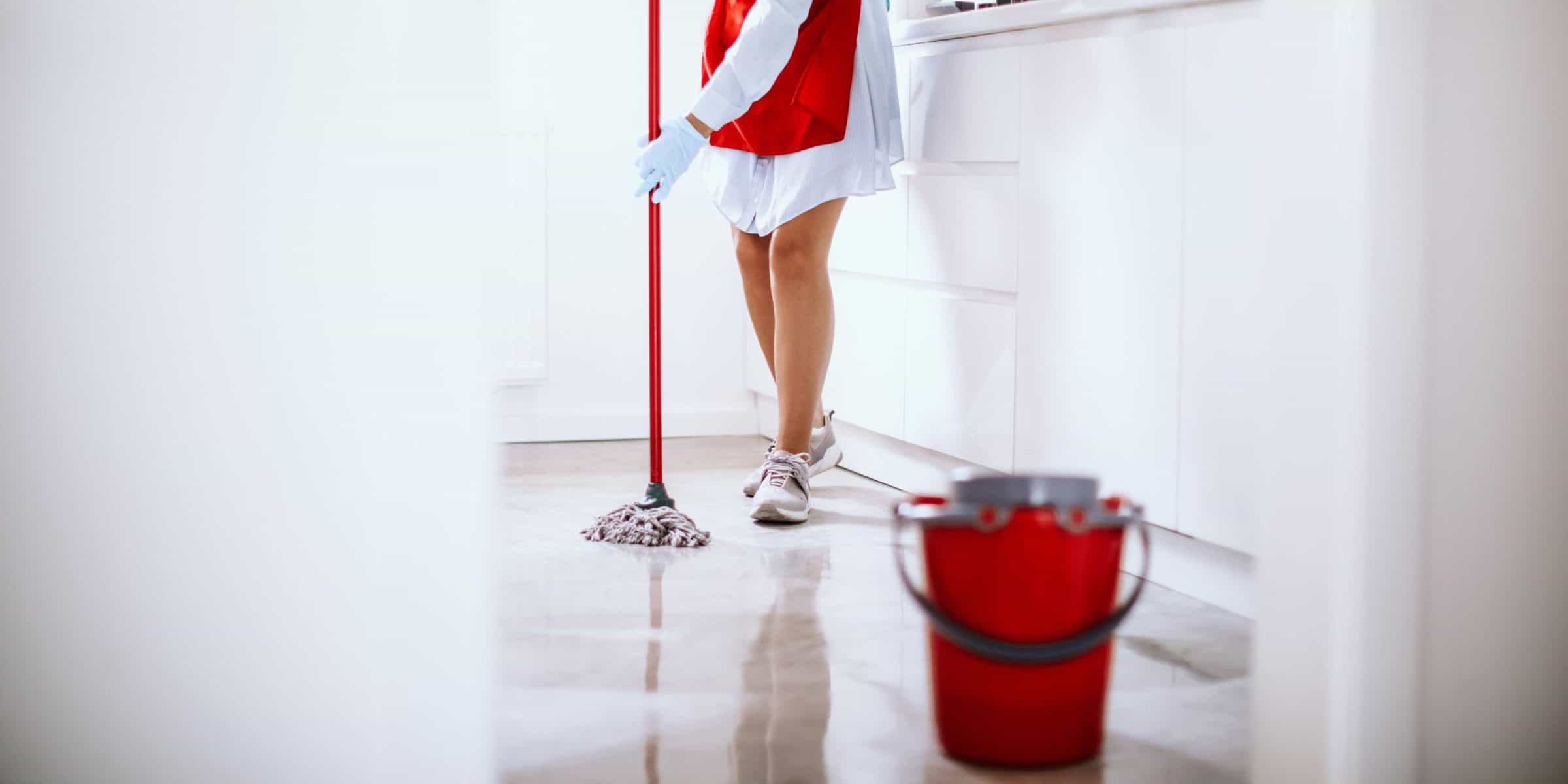
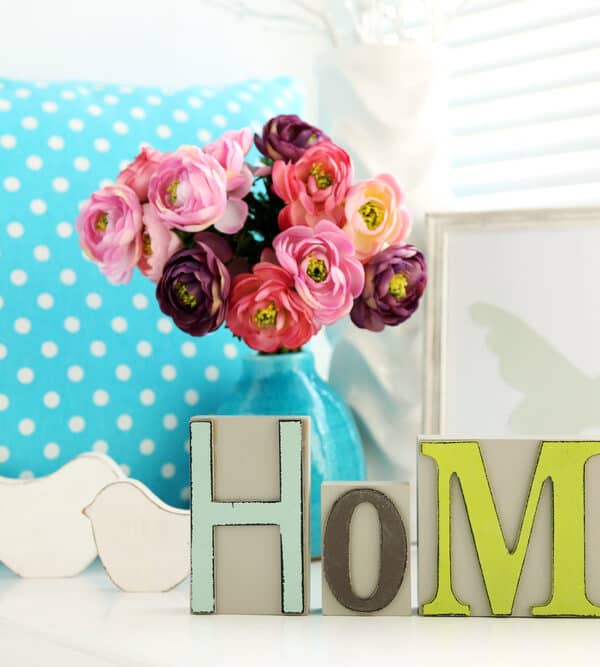
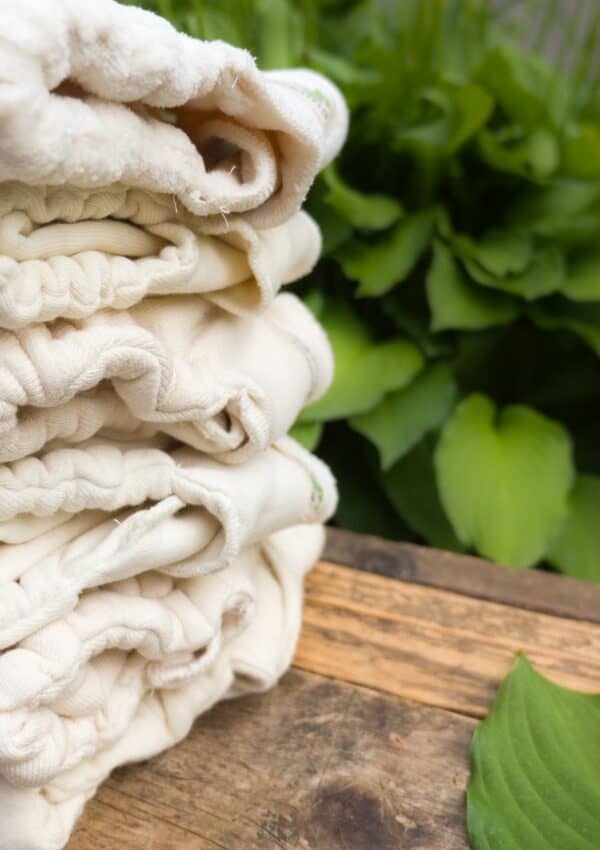
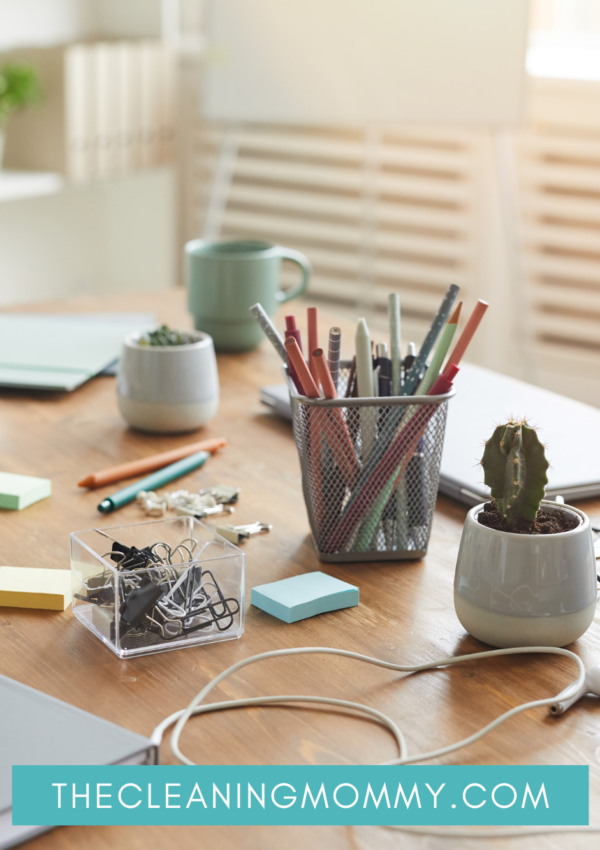
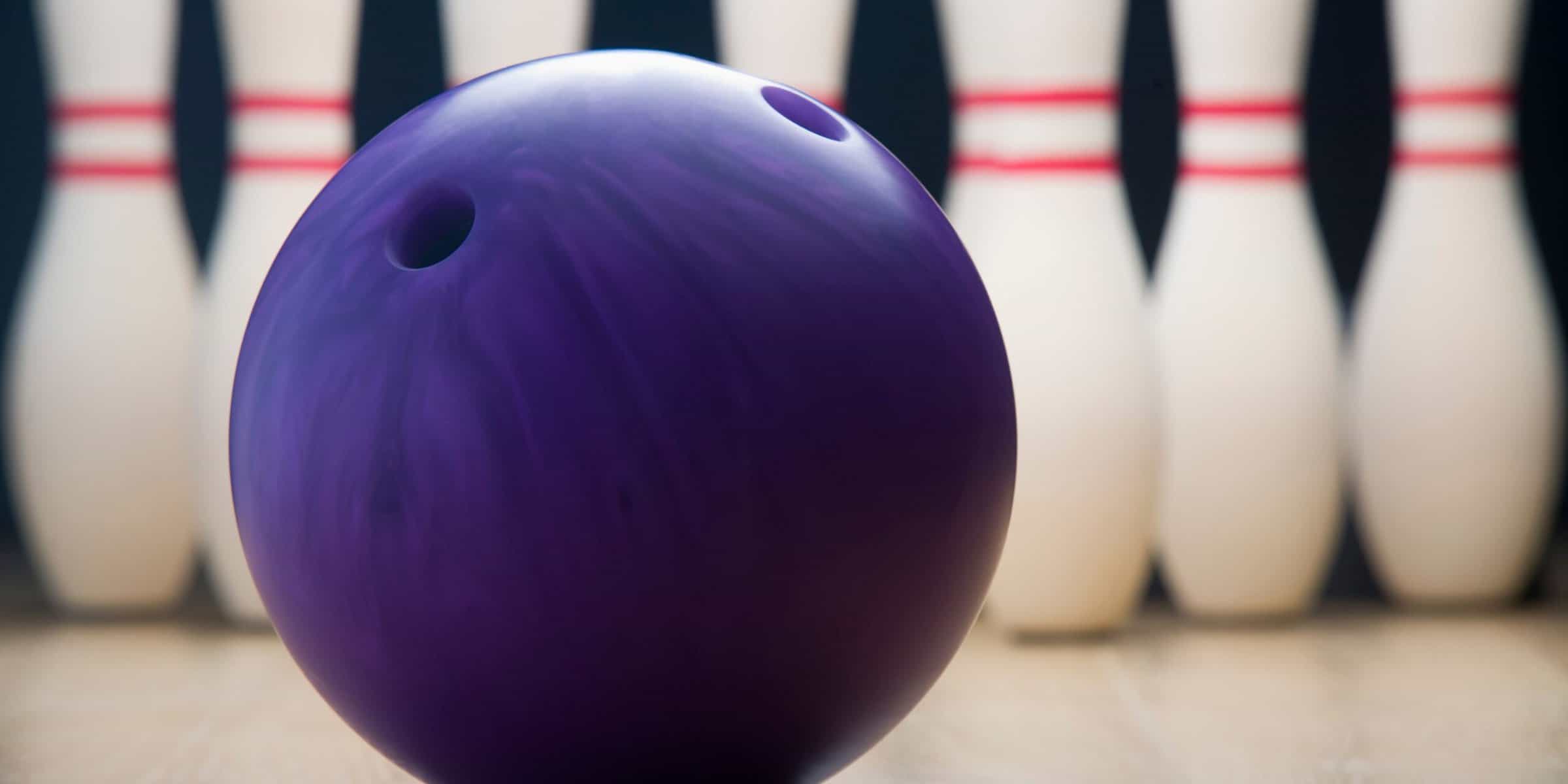
Leave a Reply